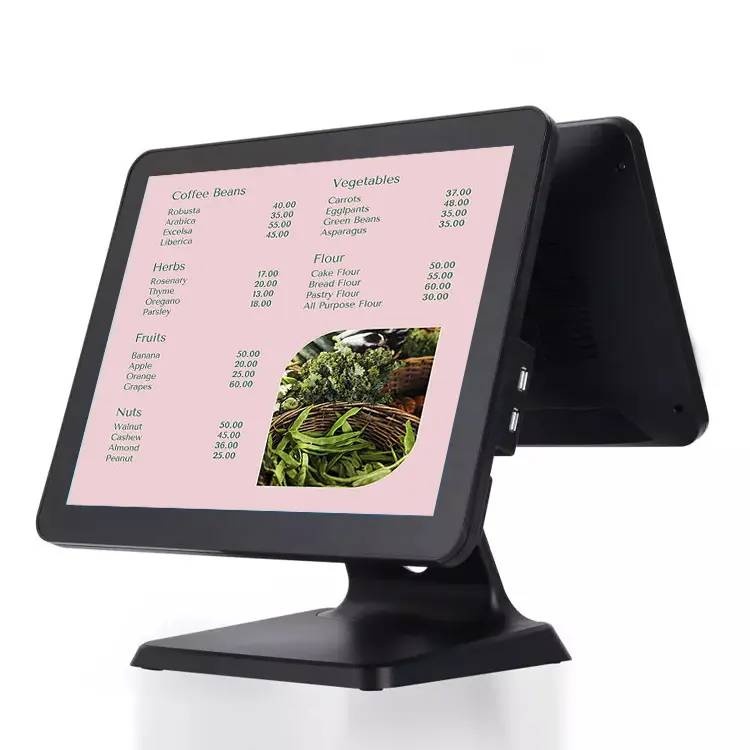The Financial Evaluation Study of Purchasing in a POS System

In today's rapidly changing business landscape, the significance of a dependable and efficient POS system is paramount. As companies across different industries aim to streamline operations, improve client interactions, and manage stock more effectively, investing in a current POS solution has become a critical decision for many entrepreneurs. No matter if you're running a bustling restaurant, a retail shop, or an online store, comprehending how a POS solution functions and the myriad of benefits it offers can deeply affect your profit margins.
The development of POS systems has transformed the way companies function. From traditional cash counters to sophisticated cloud-based systems, modern POS technologies provide a variety of features customized to satisfy the specific requirements of various industries. In the following discussion, we will examine the cost-benefit analysis of opting for a POS solution, focusing on its functionalities, safety aspects, and the comprehensive effect on efficiency and client contentment. In conclusion, we aim to provide a detailed guide that will assist businesses decide wisely about their investment in this vital system.
Comprehending Point of Sale Systems
A Point of Sale system is a combination of hardware and software that businesses use to process sales transactions. Typically, it consists of a device with a touchscreen interface, a scanner for barcodes, a sales printer, and sometimes a money drawer. The software component handles sales, stock monitoring, customer management, and record-keeping, making it an vital tool for contemporary companies. It streamlines the entire payment process, allowing for faster and more efficient transactions while collecting valuable data that can improve decision-making.
The development of POS solutions has revolutionized how businesses function. At first, classic cash registers served as the primary transaction tool, mainly noting sales and calculating totals. As technology advanced, Point of Sale systems evolved into sophisticated solutions, boasting cloud computing capabilities that enable companies to reach their systems from afar. This change provides instant information analysis, simplifying inventory management and giving companies better insights into their sales trends and client choices.
Modern Point of Sale systems can considerably enhance the experience of customers across different industries. For retail environments, ease of payments leads to reduced wait times, while restaurants can utilize features like table management and mobile ordering. The integration of payment processing options, such as touchless payments and mobile wallets, caters to consumer preferences and enhances payment security. As businesses embrace these solutions, they not only streamline operations but also nurture a more enjoyable purchasing experience for their clients. ### Choosing the Right POS System
Selecting the right POS system entails comprehending the particular needs of your business and the customer experience you wish to deliver. Commence by evaluating the size of your operation and the industry you are in, as different sectors such as retail, hospitality, and e-commerce have unique requirements. Contemplate functionalities that match your business model, such as stock control for shops or seating arrangement for restaurants. Identifying what core features resonate most with your operational workflow is essential.
Then, assess the budget and total cost of ownership associated with each option. POS systems can differ from simple setups to complete solutions that feature sophisticated options like customer relationship management and performance metrics. https://abelwinstead01.livejournal.com/profile to factor in not only the initial investment but also recurring expenses such as monthly charges, maintenance, and possible improvements. Look for systems that offer versatility and expansibility so that your POS can adapt as your business grows, ensuring you will not outgrow your system too quickly.
Lastly, take into consideration the implementation process and the support provided by the vendor. https://bookpillow1.bravejournal.net/a-case-study-about-how-a-pos-solution-revolutionized-a-community-business should come with strong customer support to assist with installation, training, and troubleshooting. Explore options that provide comprehensive training resources for your staff, as effective use of the POS can significantly enhance productivity and customer satisfaction. Conducting tests or requesting demos can also be highly beneficial in making an informed decision that matches your goals and operational needs.
Securing Your POS Solution

To guarantee the protection of the POS system, it is essential to put in place effective protections against possible digital threats. Commence by utilizing robust security measures such as firewalls, antivirus software, and intrusion detection systems. Continuously monitor the network for suspicious activity and execute routine security audits to detect vulnerabilities. Additionally, maintaining adherence with the Payment Card Industry Data Security Standard (PCI DSS) is essential for securing customer transaction data and safeguarding your business from legal issues.
Another important aspect of secure POS operations is staff training. Guarantee that every staff members are trained about best practices for using the POS system securely. This entails establishing unique login credentials, avoiding common passwords, and being aware about phishing attempts. Regularly updating training materials can aid reinforce the importance of security and educate your team on the newest threats and preventative measures.
Finally, maintaining your POS solution updated is crucial for maintaining security. Software updates often provide patches for identified vulnerabilities, making it critical to stay current. Schedule routine system updates and effectively communicate the importance of these updates to your team. Additionally, employ secure configurations and access controls to restrict data exposure, reducing the risk of breaches. By merging these strategies, you can significantly enhance the security and robustness of the POS solution.
